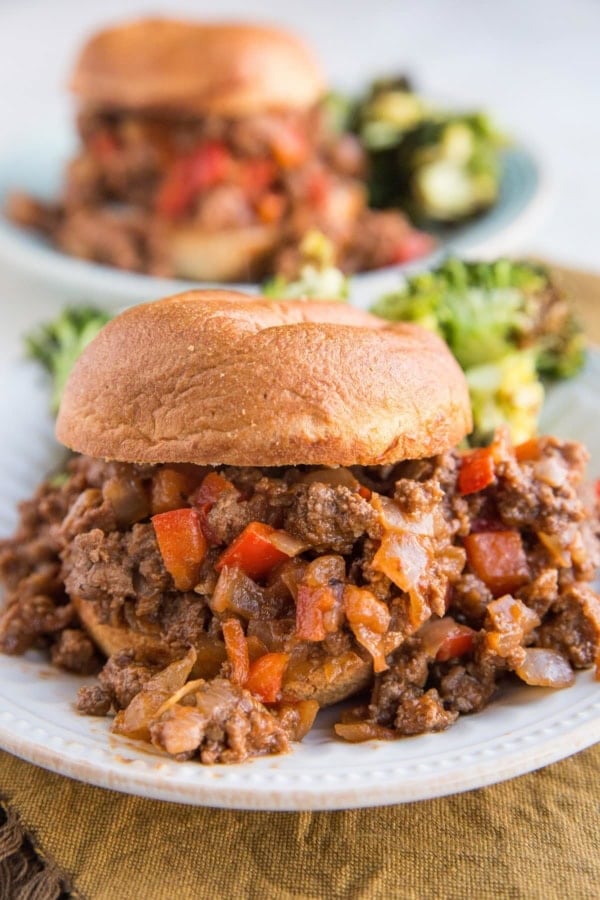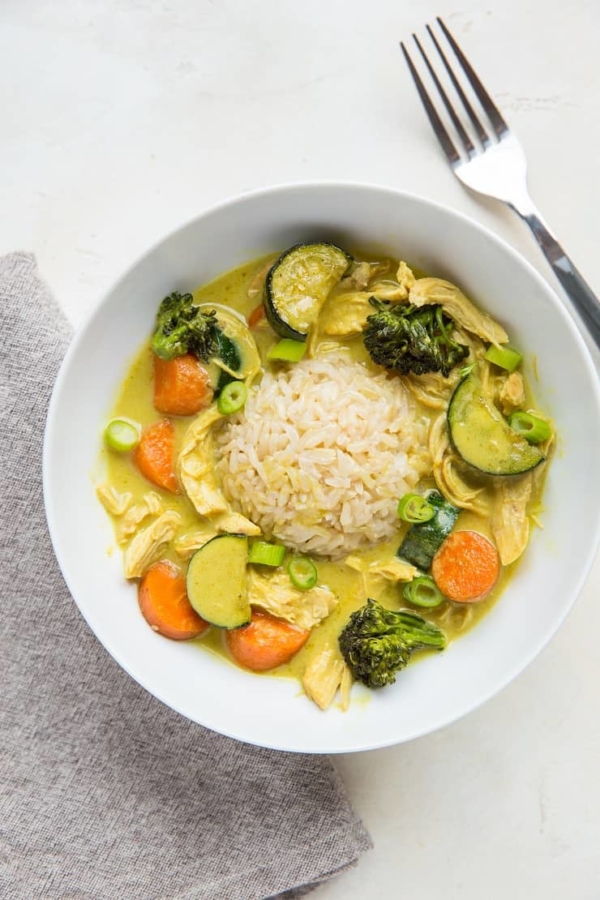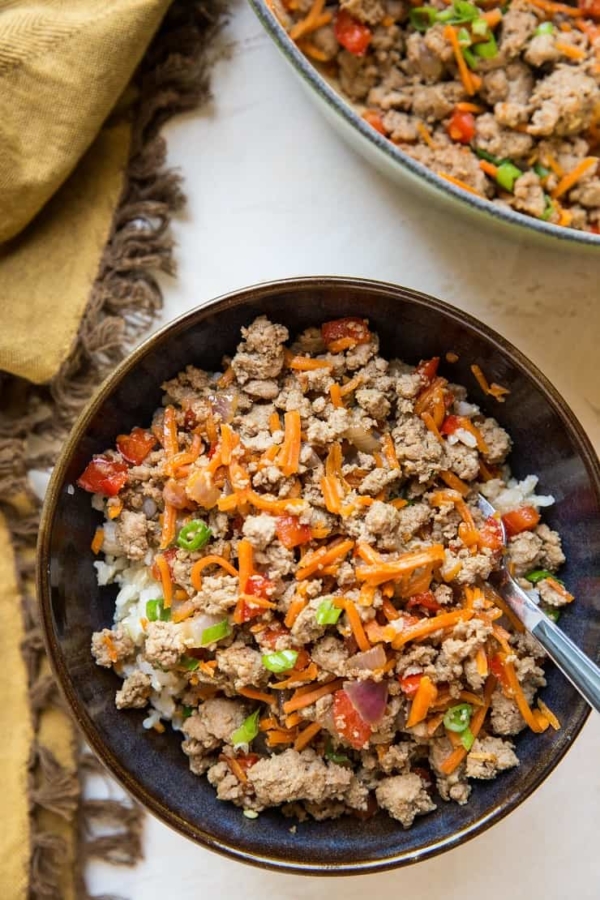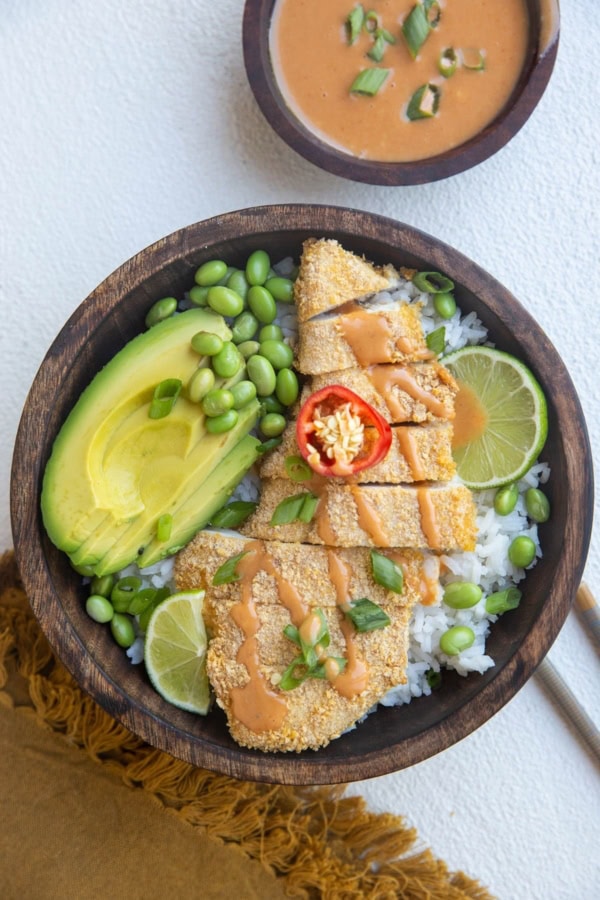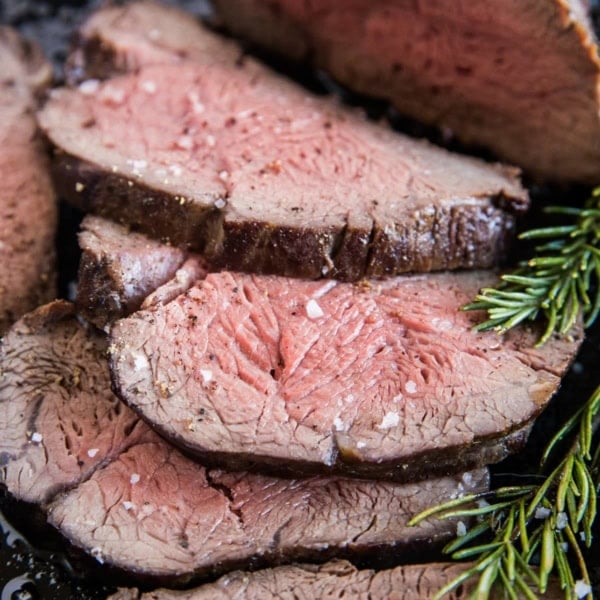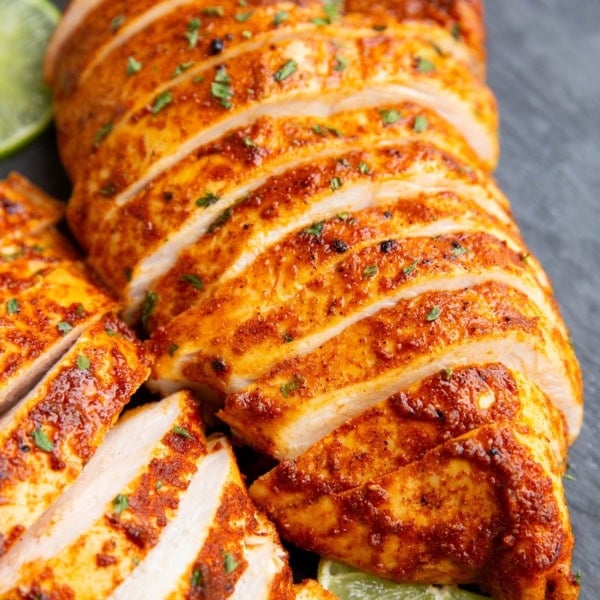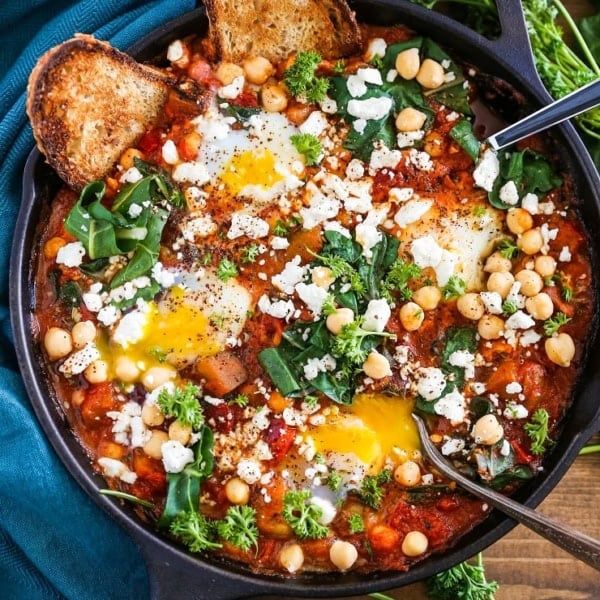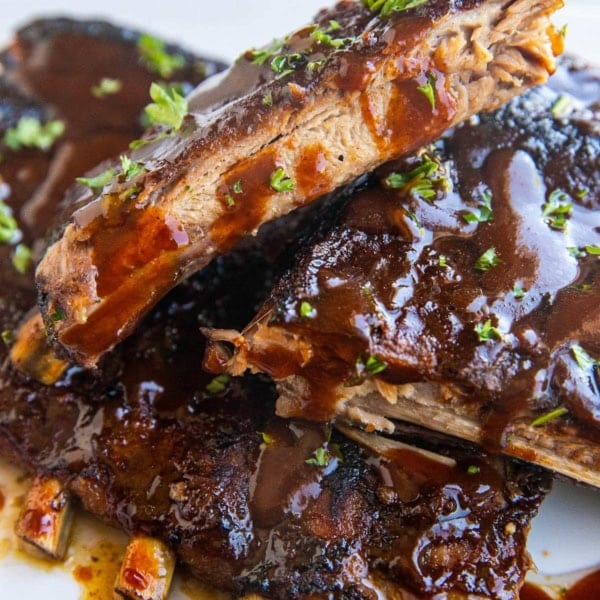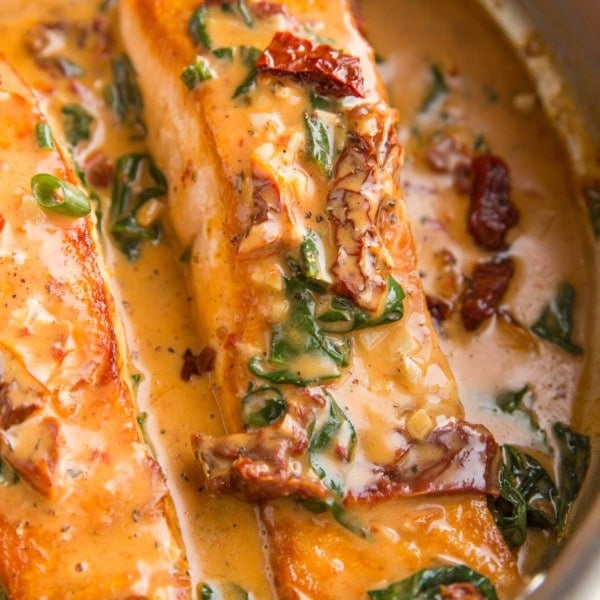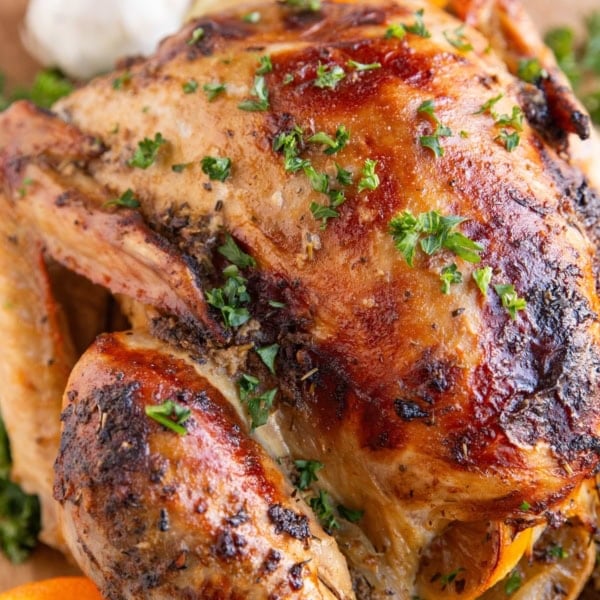A step by step tutorial on how to reverse sear steak! With a few simple tricks, you’ll end up with the absolute best steaks every single time. Serve it up with your favorite side dishes for an unforgettable restaurant-quality meal!
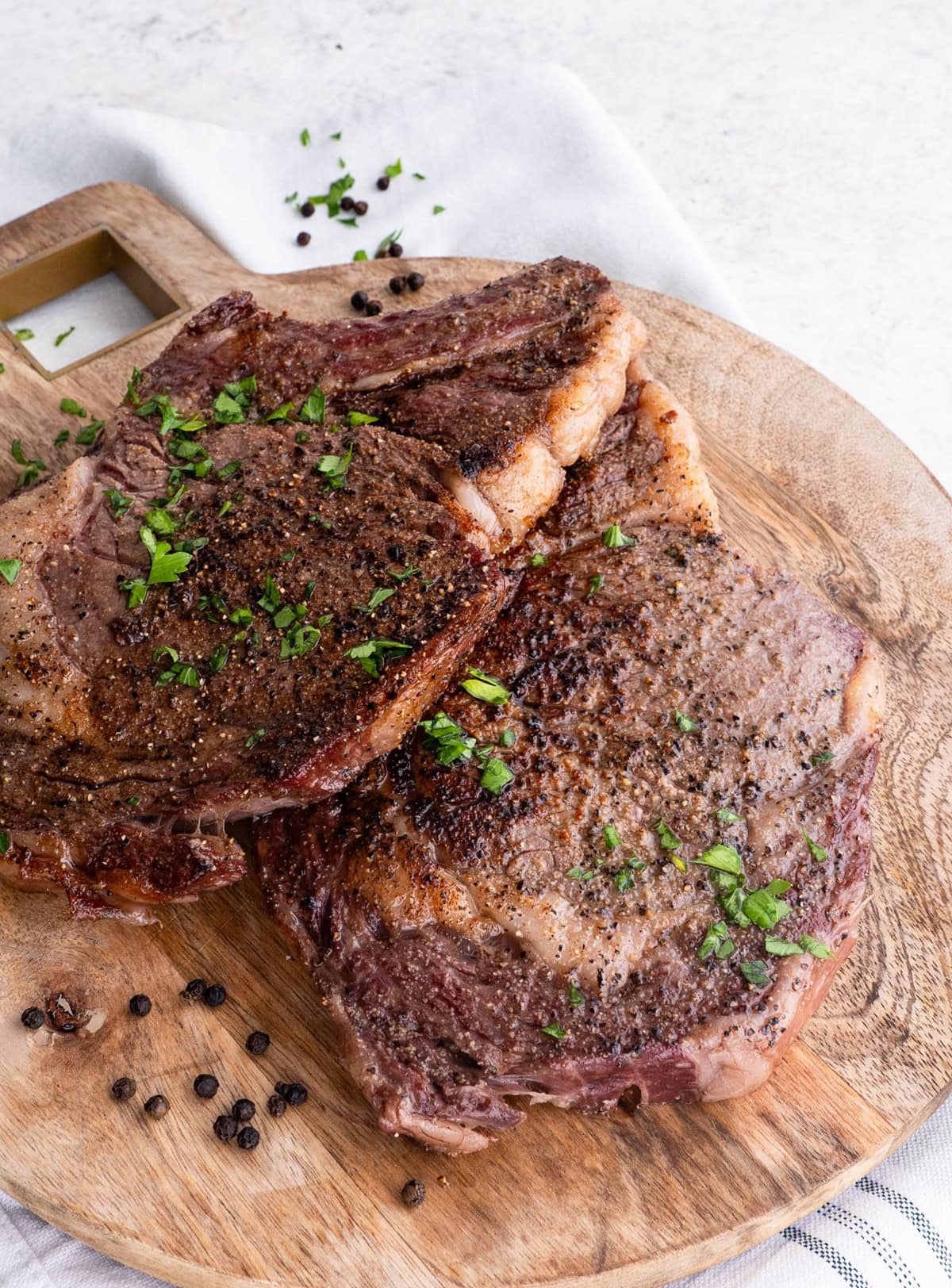
Steak lovers, if you haven’t tried reverse searing steak, I can promise you it is both very simple and also life-changing.
I mentioned this in my BBQ Ribeye Steak recipe, but we’re huge steak fanatics in my house and as a result, we have perfected our go-to methods for cooking beef.
This post covers everything you need to know about how to reverse sear a steak so that you end up with a better-than-restaurant quality meal.
You’ll never rely on a steakhouse for delicious steak again, as you’ll now be making the best steaks in town!
A quick tip? The best way to achieve a show-stopping steak every time is to use a meat thermometer and to use 2-inch thick steaks. I also recommend using a cast iron pan for the searing portion to get the best crust.
I have included a recipe video in the recipe card below to demonstrate how easy the process is.
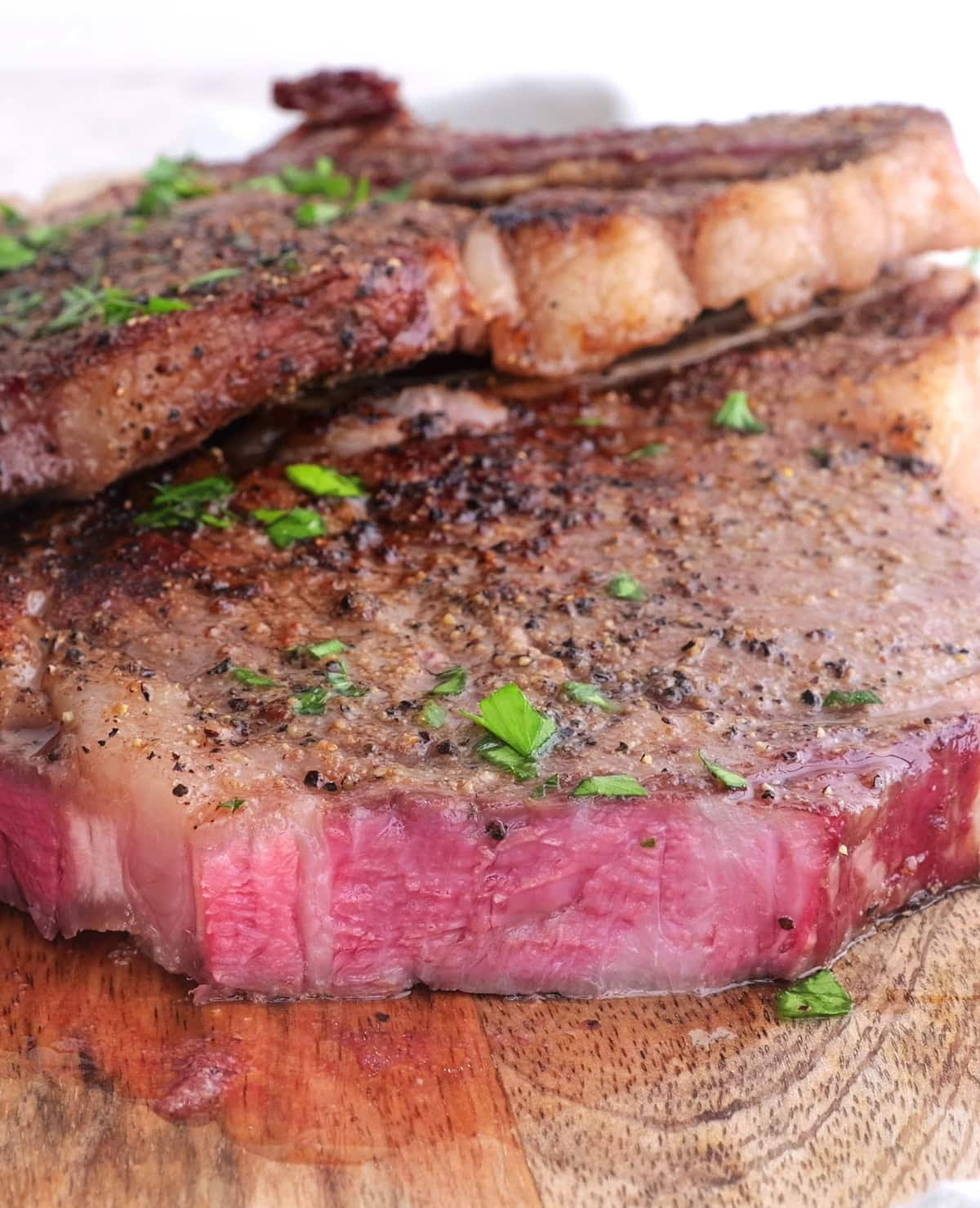
In case you aren’t familiar, let’s chat about the basic concept of reverse seared steak.
What Is a Reverse Seared Steak?
Reverse searing steak involves first baking steak in the oven at a very low temperature until it is mostly cooked, then searing it quickly in a hot skillet to achieve that mouth-watering delicious sear on the inside.
The purpose of this two-part method is to end up with perfectly cooked steak, ideal for those who love their steaks medium-rare.
Because searing steak alone can leave you with a burned outside before the inside is cooked enough, searing alone isn’t ideal for a perfectly cooked steak.
Similarly, baking steak may result in the perfect doneness on the inside, but won’t get you that incredible golden brown crisp on the outside.
Combining both forces allows us a perfect steak each and every time where the inside is juicy and tender and the outside features an epic crust.
This cooking method of oven baking with a quick sear in a hot pan guarantees a good sear on the exterior of the steak with your favorite doneness in the center for the best results.
The great news about cooking steak using this reverse sear steak recipe is you only need a few basic ingredients. No fancy marinades or dry rubs are necessary!
Plus, you can find everything you need at any grocery store and the end result is so delicious, your friends and family will dub you the steak master!
Ingredients For Reverse Sear Steak:
Steak: Pick your favorite steak for reverse searing. What is the best kind of steak for reverse searing? Truly any kind of steak will work; however, fattier cuts of beef, like ribeye steak and New York Strip Steaks result in the most flavor and best texture.
Thick-cut steak also works best, a thick steak achieves a nice outer crust before the inside is overcooked.
In this sense, aim for steaks that are an inch and a half thick to 2 inch thick steaks. Thinner steaks will still work as long as you’re okay with medium doneness.
Choose a steak that has a decent amount of fat marbling for juicy steak with lots of beefy flavor.
The fat helps keep steak moist and brings a delicious char on the outside. While filet mignon is a lean steak, it works great for reverse searing due to its tenderness and thickness.
Seasonings: Garlic powder, sea salt, and black pepper is all we need to season the absolute best steak.
You can vary the seasonings here and use any dry rub you enjoy, like steak seasoning.
For me, the simple combination of salt, pepper, and garlic powder. Onion powder works great here too.
Avocado Oil: To sear the steak, we need some high temperature cooking oil. I like using avocado oil because it has a neutral flavor and is a good source of omega 3 fatty acids with a high smoke point.
Canola oil or vegetable oil works too but I don’t love its inflammatory properties.
I advise against using olive oil because it burns at a fairly low temperature so it isn’t ideal for high temperature searing.
Butter: In addition to oil, we add butter for mind blowing incredible flavor. Butter also caramelizes the steak to add to that incredible flavorful crust for a crispy exterior.
You can also use beef tallow or ghee instead of butter.
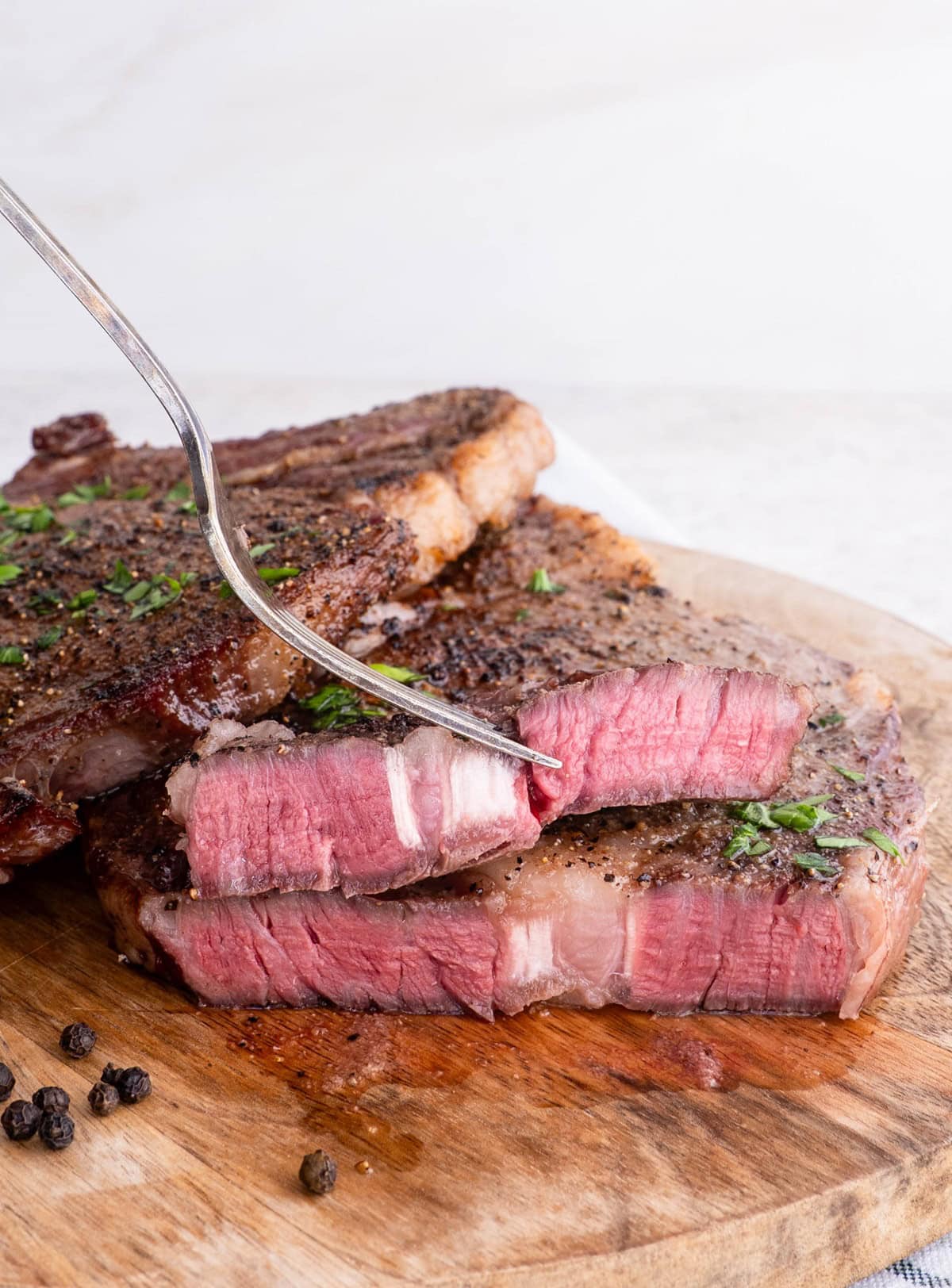
Now that we have the basics down, let’s make some delicious reverse-seared steak.
How to Reverse Sear a Steak:
Remove the steaks from their packaging and place them on a large plate or cutting board. Use a paper towel to pat any excess moisture off both sides of each steak.
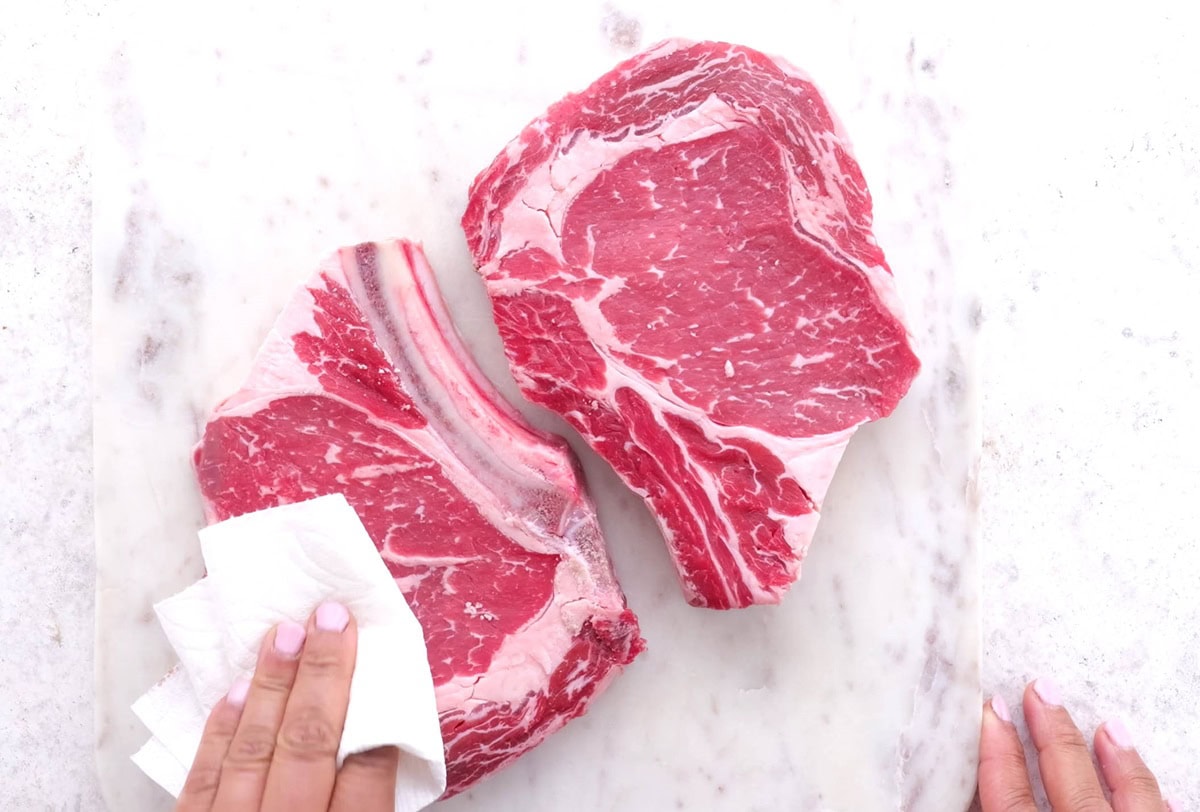
Sprinkle both sides of the steaks liberally with kosher salt, garlic powder, and black pepper.
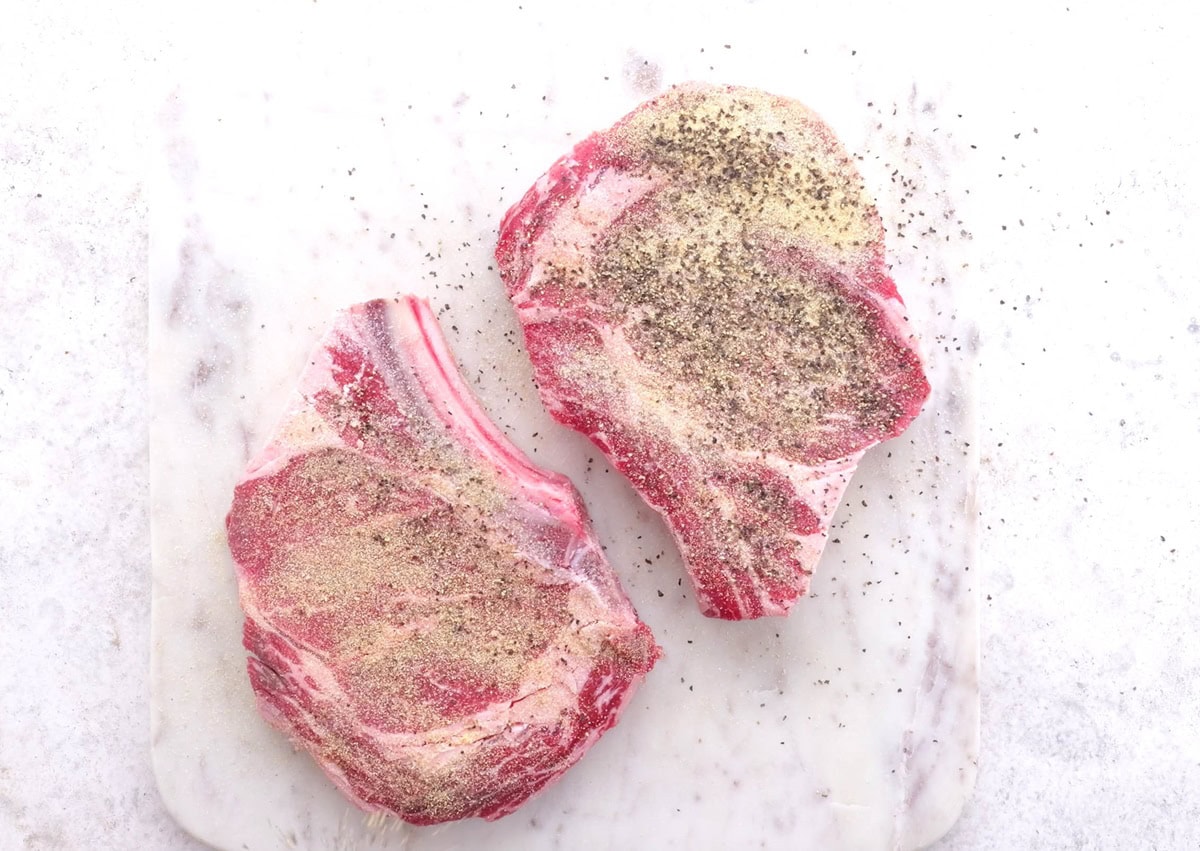
To dry brine the steaks, set them on a wire rack on top of a large rimmed baking sheet and refrigerate, uncovered, overnight. This will help tenderize the steaks.
When you’re ready to cook the steaks, bring them out of the refrigerator 20 minutes before cooking to bring them closer to room temperature. If you aren’t dry brining the steaks, skip this step and move on to step four.
Place the steaks on a wire rack that’s set on top of a rimmed baking sheet. Preheat the oven to 250 degrees Fahrenheit.
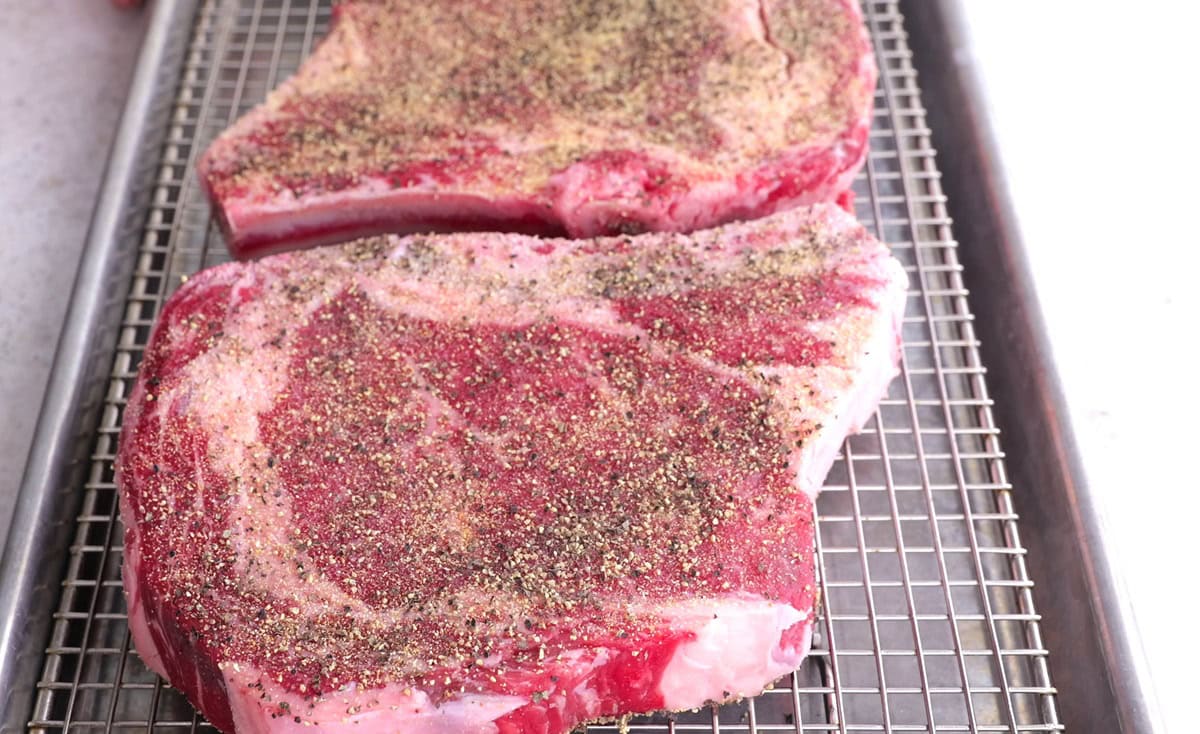
Bake steaks on the center rack of the preheated oven until the internal temperature of the steaks reads 105 to 110 degrees F for rare to medium-rare steak, 115 degrees for medium-rare steak, 125 degrees for medium steak, or 135 degrees F for medium-well steak.
This requires about 20 minutes for rare steak and up to 40 minutes for medium-well steak.
The exact cooking time will vary depending on the weight and thickness of the steak as well as the temperature of the steak going into the oven.
Five minutes before the steaks come out of the oven, add 1 tablespoon of avocado oil (or high-temperature cooking oil of choice) oil to a cast iron skillet over high heat.
Allow the skillet to heat up for a few minutes, until the oil is sizzling hot.
You’ll know the skillet is hot enough if you flick a little water on it and the water immediately sizzles off or if the oil just barely begins to smoke.
Carefully place the steaks on the hot surface of the skillet and immediately add the butter too. Sear each side for about 45 seconds to 60 seconds, until each side is deeply browned with a nice crust.
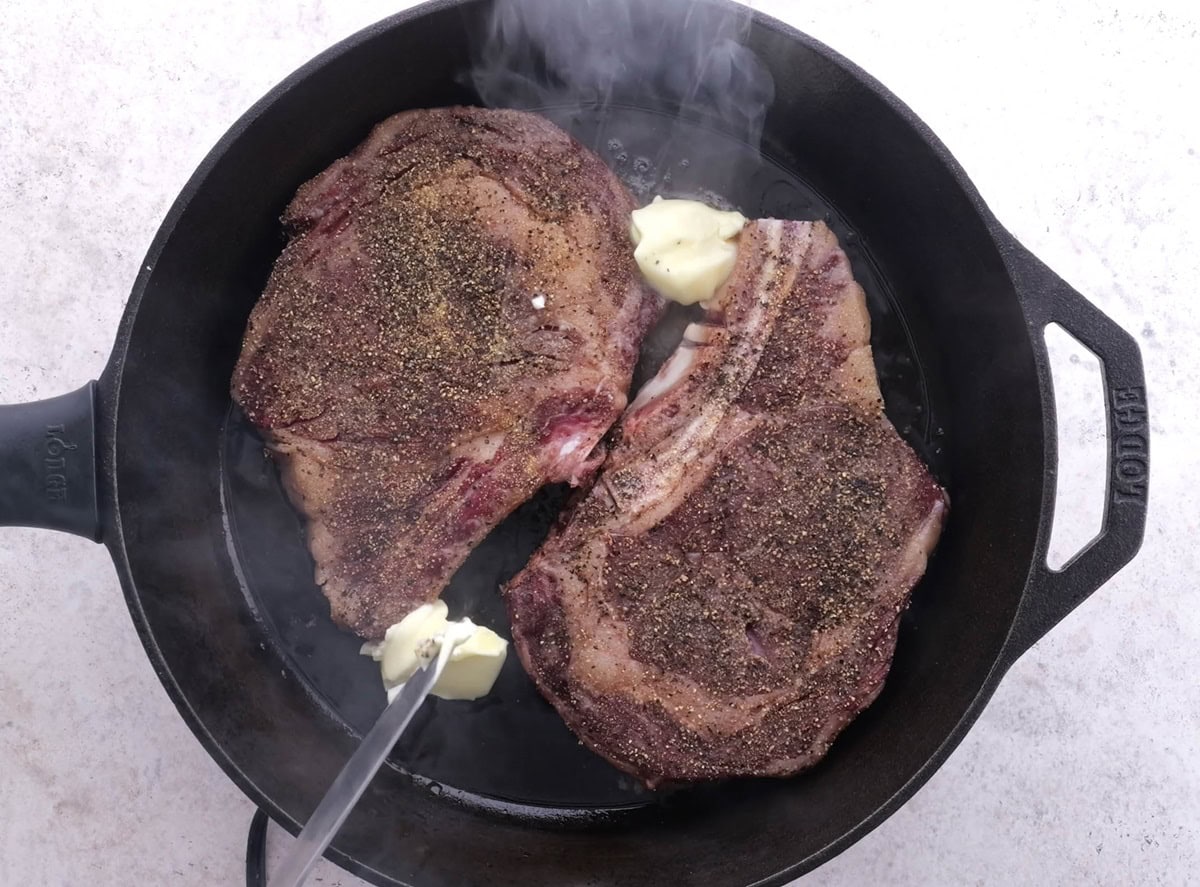
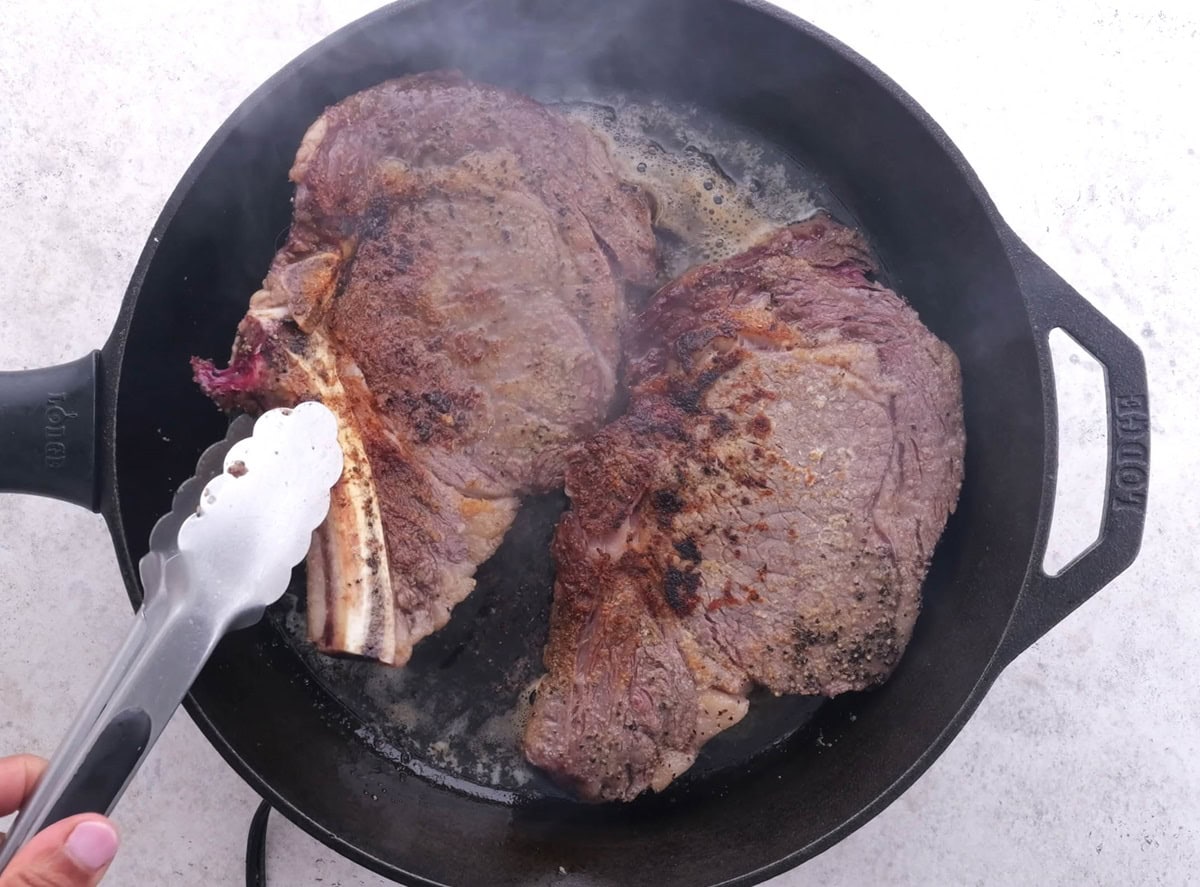
Using tongs sear the sides of the steak too (this is particularly delicious if the steaks have a fat cap).
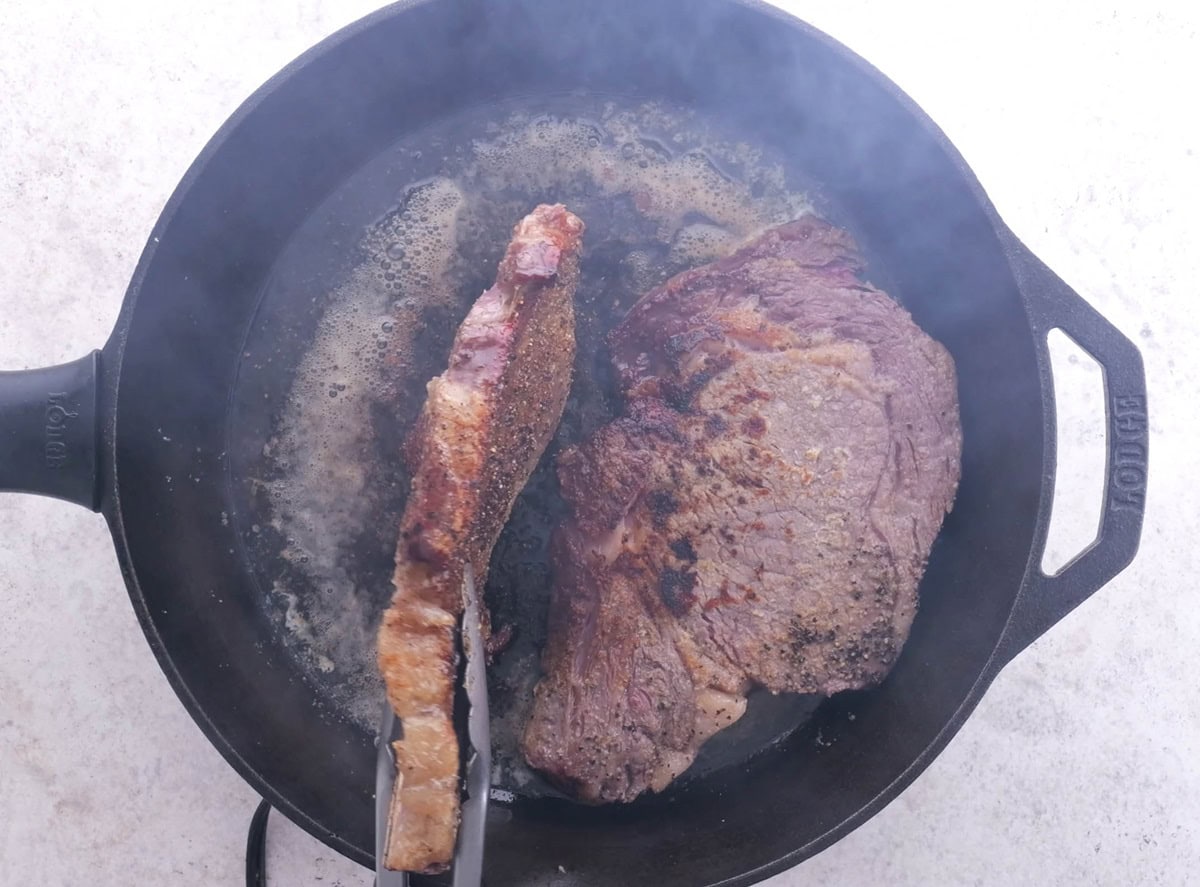
Continue searing the steak until it reaches your preferred level of char on the outside, while keeping the internal temperature in mind.
Be sure to check the internal temperature of the steak using a digital thermometer after searing the steaks for 2 minutes to ensure you don’t overcook the steaks.
Serve immediately with your choice of side dishes, and enjoy! While you can allow the meat to rest for a few minutes, there is no need to do so with reverse sear steaks.
Use the temperature guide below to cook the steak to your preferred doneness. Remember, a thermometer is key to hit your target temperature.
Final Cooking Temperature for Steak:
- Rare: 115 to 120 degrees Fahrenheit
- Medium Rare: 125 to 130 degrees Fahrenheit
- Medium: 135 to 140 degrees Fahrenheit
- Medium Well: 145 to 150 degrees Fahrenheit
- Well Done: 150 to 155 degrees Fahrenheit
How Long to Reverse Sear Steak:
The exact cooking time depends on the thickness of your steak and the temperature of the steak going into the oven.
Thicker steaks require more time than thinner steaks so basing the cook time off of the internal temperature of the steak is the best way to end up with the final temperature you’re looking for.
In general, 2 inch steaks require about 20 to 25 minutes in the oven at 250 degrees Fahrenheit and just 45-60 seconds in a hot frying pan for searing to end up with a medium-rare steak. For medium doneness, bake for 30 minutes and for well-done, 40 minutes.
I imagine most of you are aiming for a medium-rare steak, so start with 20 to 25 minutes at 250 degrees and pull the steaks out when they are about 110 to 120 degrees to sear them in a hot cast iron skillet.
If you own a probe thermometer that is heat resistant such as Meater Wireless Thermometers, the cooking process will be even easier because you will know the internal temperature of the steak at all moments in time.
Nevertheless, a standard digital thermometer works great too.
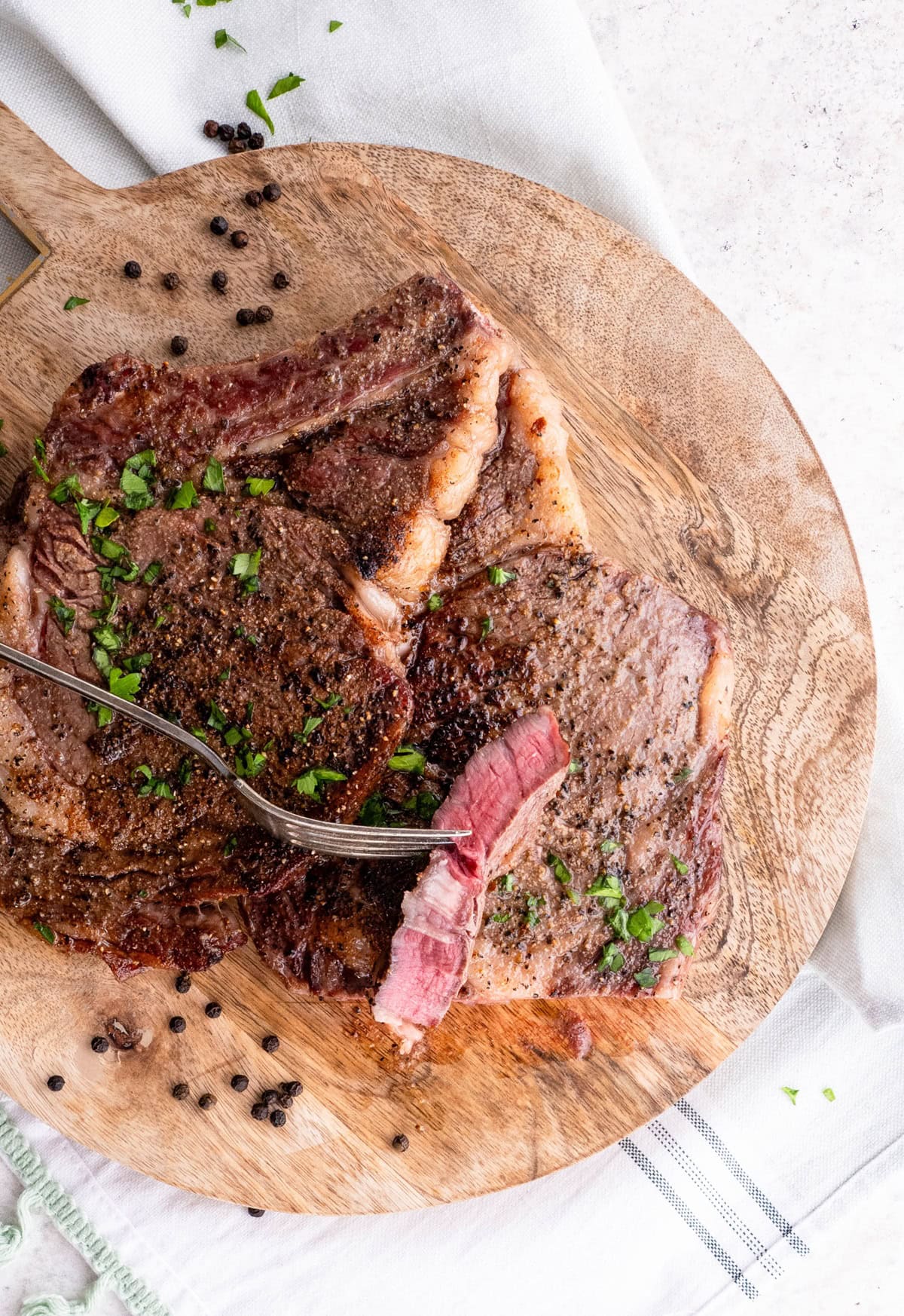
Can I Reverse Sear Steak Using a Grill?:
Absolutely! If you prefer grill marks and that smoky grill flavor, you can employ the reverse sear technique using a charcoal grill instead of a skillet.
The only reason I prefer using a skillet for searing is the process is much quicker as there is no need to wait for the charcoal to become ready. But if you’re okay with the extra time, searing on a hot grill over direct heat arguably wins you the absolute best steak.
If you’re a steak lover, the grill method may be worth at least trying once in spite of the longer prep time. The good news is, you can get the coals going while the steak is baking in the oven.
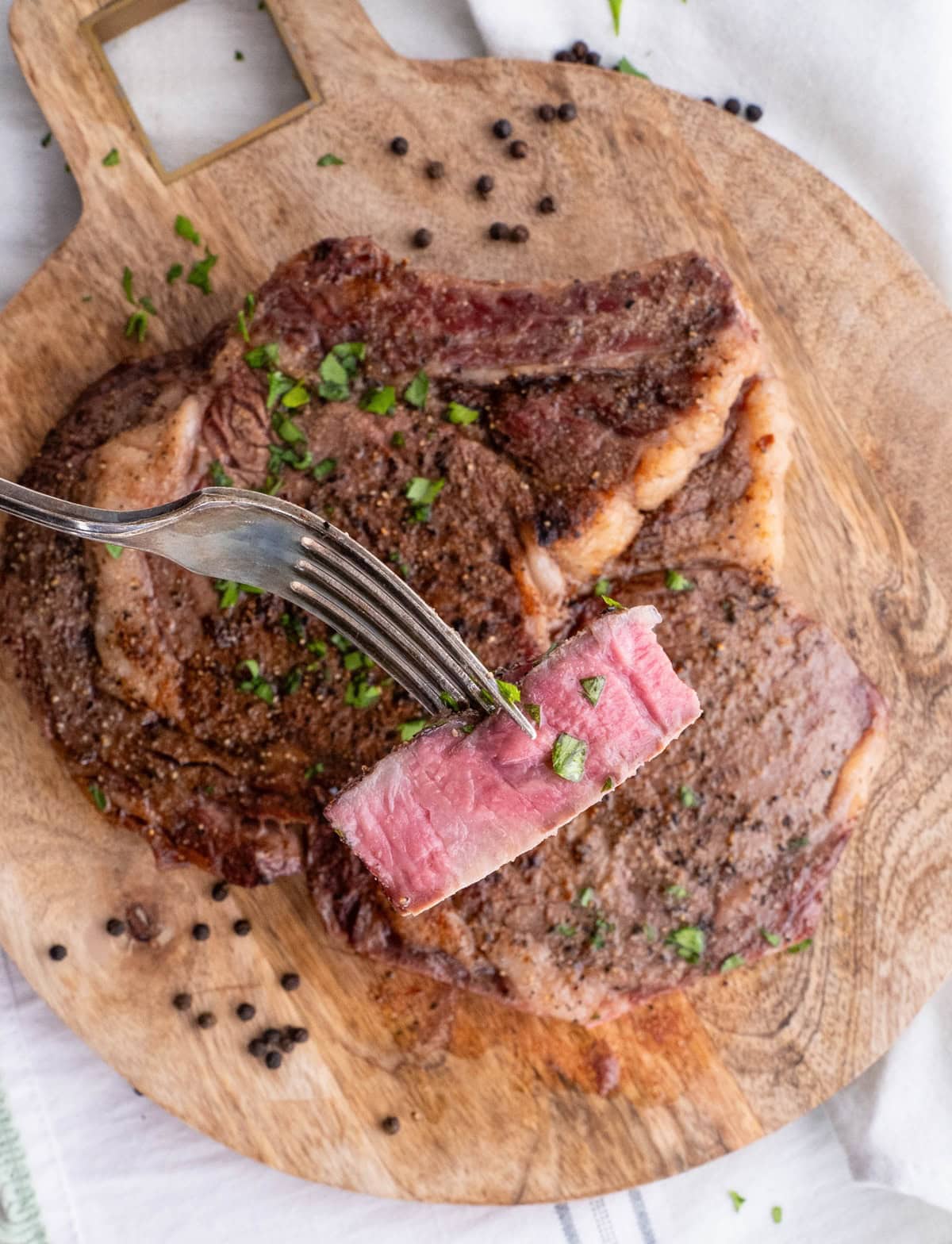
Can I Sear the Steaks First?:
Yes! If you prefer searing the steaks first and baking them in the oven after, you can certainly do this instead of the reverse sear method.
We actually prefer searing first, baking second, because it is the best way to get a deep golden crust without worrying about overcooking the center.
This way, you can prioritize the crust without worrying about how long you’re searing it and using the oven to finish off the process.
If you go this route, sear each side of the steak for 3 to 5 minutes per side (remember to sear the edges too) or until your crust looks acceptable.
Then transfer the seared steaks to a roasting pan with a wire rack and bake at 250 for until the steak has reached your desired finish temperature (about 10 to 15 minutes for medium-rare).
After searing a steak how long in the oven depends on the thickness of the steaks and also your desired doneness.
Again, use a meat thermometer diligently for your perfect steak.
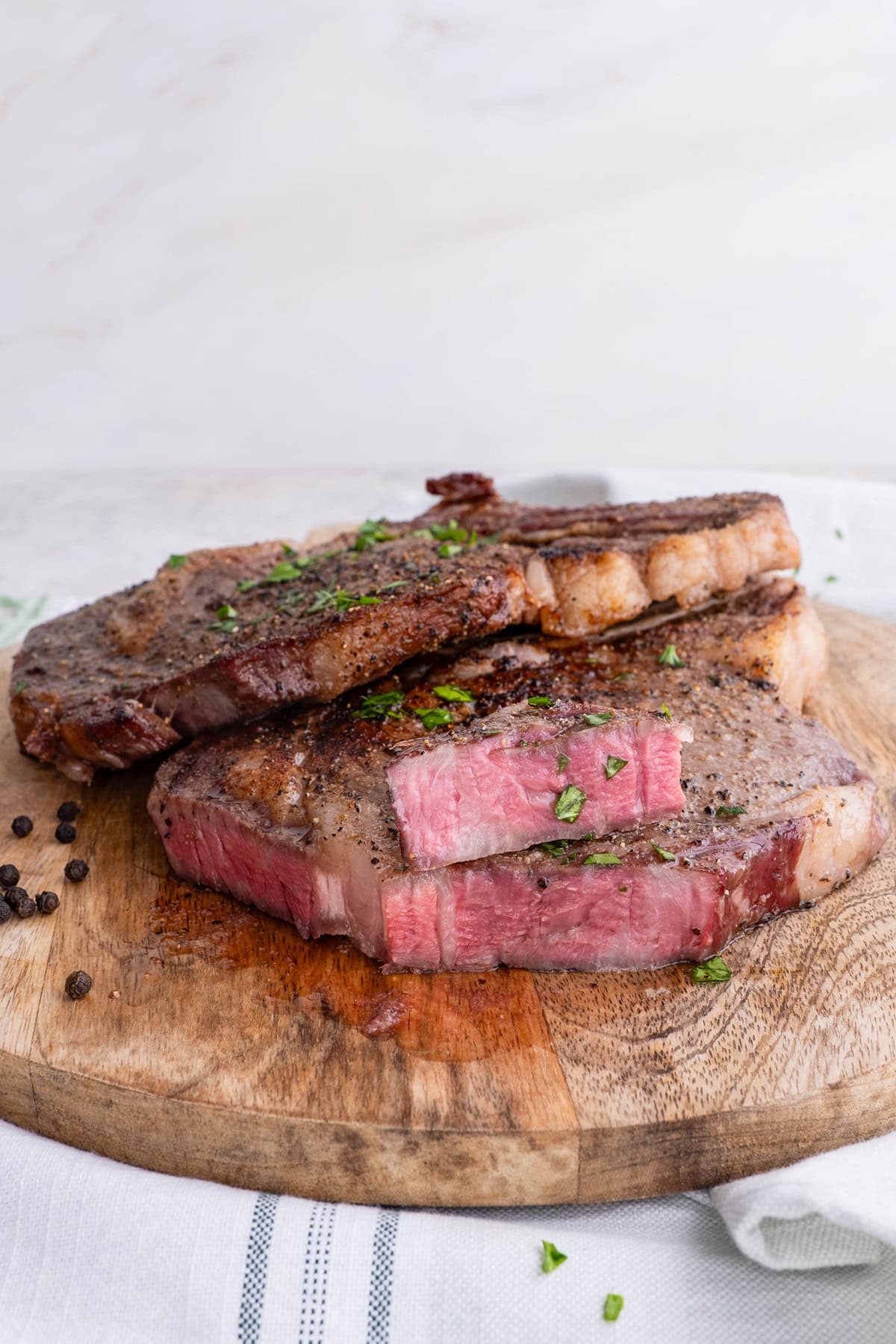
Looking for side dishes that pair beautifully with steak? Here are some of my favorites.
What To Serve with Steak:
- Garlic Herb Roasted Vegetables
- Italian Salad
- Tortellini Pasta Salad
- Caramelized Cabbage with Bacon
- Pear Apple Avocado Spinach Salad
How to Store Leftover Steak:
Store leftover steak in an airtight container in the refrigerator for up to 5 days. To reheat steak, use an air fryer, oven, or skillet to try to get the crust back. While microwaving steak works, the texture turns out fairly rubbery, which is why I like to reheat steak in a skillet.
I like to chop up leftover steak and use it in my Steak Salad with Berries, Avocado and Goddess Dressing.
Enjoy making beef at home? Check out some of my other beef tutorials.
More Beef Recipes:
- BBQ Tri Tip
- How to Cook Brisket in the Oven
- Smoked Tri Tip
- Broiled Ribeye Steak
- Marinated Skirt Steak
The next time you’re craving a mouth-watering steak, try the reverse sear method for an unforgettable main dish. I hope you enjoy this cooking technique as much as we do!
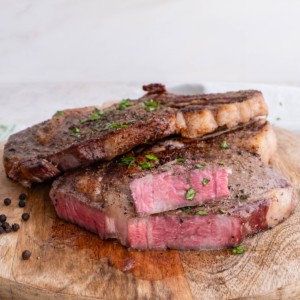
Reverse Sear Steak
Ingredients
- 2 ribeye steaks 2 inches thick and about 1 pound each*
- Sea salt
- black pepper
- garlic powder
- 1 Tbsp avocado oil
- 2 Tbsp unsalted butter
Instructions
- Remove the steaks from their packaging and place them on a large plate or cutting board. Use a paper towel to pat any excess moisture off both sides of each steak.
- Sprinkle both sides of the steaks liberally with kosher salt, garlic powder, and black pepper.
- Place the steaks on a wire rack that’s set on top of a rimmed baking sheet. Preheat the oven to 250 degrees Fahrenheit.
- Bake steaks on the center rack of the preheated oven until the internal temperature of the steaks reads 105 to 110 degrees Fahrenheit for rare to medium-rare steak, 115 degrees for medium-rare steak, 125 degrees for medium steak, or 135 degrees F for medium-well steak. This requires about 20 minutes for rare steak and up to 40 minutes for medium-well steak. The exact cooking time will vary depending on the weight and thickness of the steak as well as the temperature of the steak going into the oven.
- Five minutes before the steaks come out of the oven, add 1 tablespoon of avocado oil (or high-temperature cooking oil of choice) oil to a cast iron skillet over high heat. Allow the skillet to heat up for a few minutes, until the oil is sizzling hot. You’ll know the skillet is hot enough if you flick a little water on it and the water immediately sizzles off or if the oil just barely begins to smoke.
- Carefully place the steaks on the hot surface of the skillet and immediately add the butter too. Sear each side for about 45 seconds to 60 seconds, until each side is deeply browned with a nice crust. While the steaks are searing, use a spoon to ladle the butter over the meat.
- Use tongs sear the sides of the steaks too (this is particularly delicious if the steaks have a fat cap). Continue searing the steak until it reaches your preferred level of char on the outside, while keeping the internal temperature in mind. Be sure to check the internal temperature of the steak using a digital thermometer after searing the steaks in the skillet for 2 minutes to ensure you don't overcook the steaks.
- Serve immediately with your choice of side dishes, and enjoy! While you can allow the meat to rest for a few minutes, there is no need to do so with reverse sear steaks.
Video
Notes
- Rare: 115 to 120 degrees Fahrenheit
- Medium Rare: 125 to 130 degrees Fahrenheit
- Medium: 135 to 140 degrees Fahrenheit
- Medium Well: 145 to 150 degrees Fahrenheit
- Well Done: 150 to 155 degrees Fahrenheit
Nutrition
This post contains affiliate links, which means I make a small commission off items you purchase at no additional cost to you.

